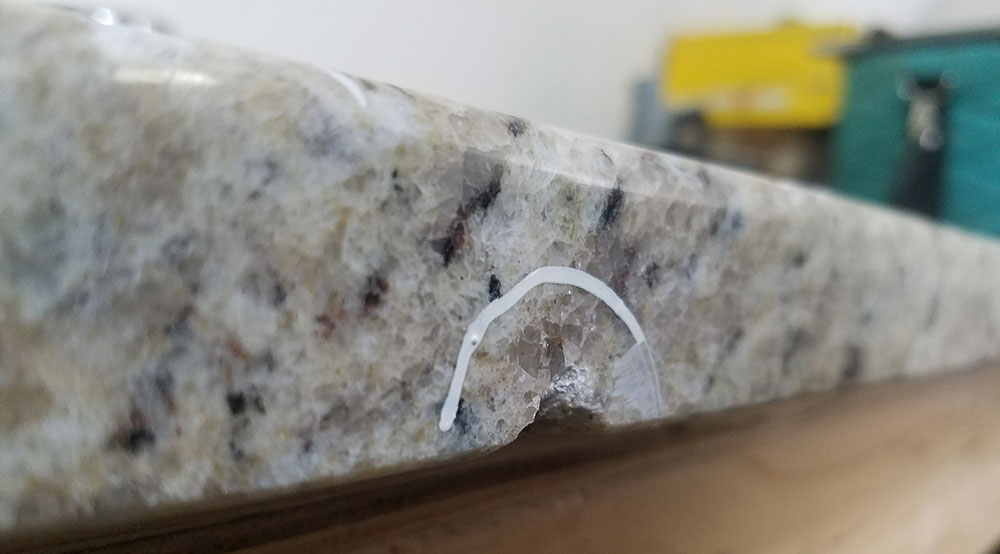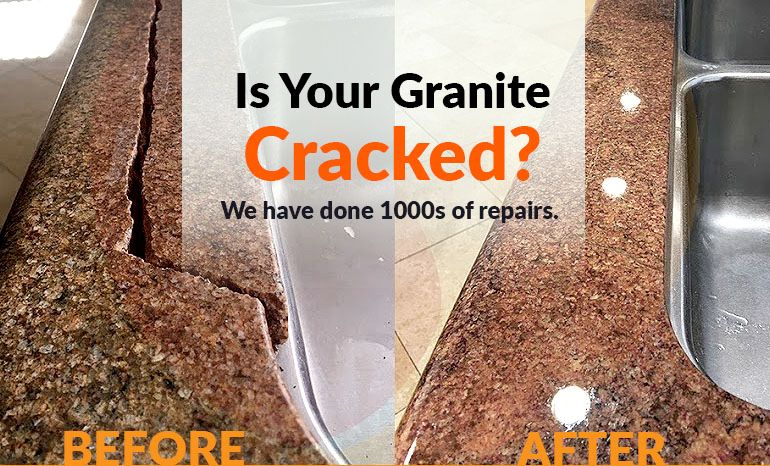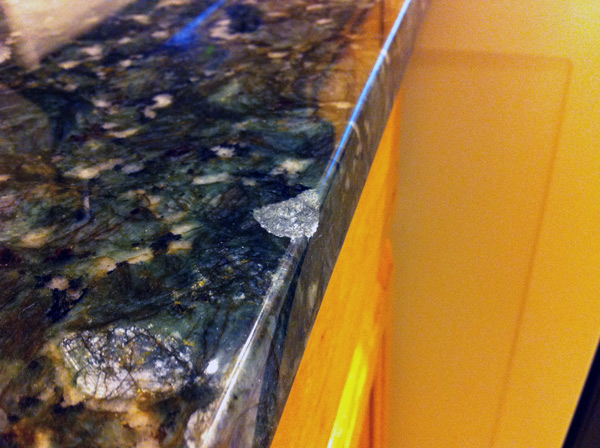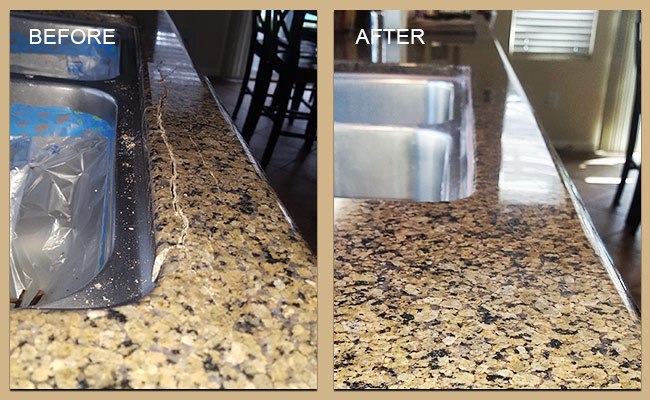Fixing a chipped granite countertop involves several steps that can restore the surface to its original beauty and functionality. Granite, while durable and resistant to many types of damage, is not impervious to chips, especially on edges and corners where the stone is thinner and more vulnerable. Addressing these chips promptly can prevent further damage and maintain the countertop’s aesthetic appeal.
The first step in fixing a chipped granite countertop is to assess the extent of the damage. Small chips, typically less than a quarter inch in size, can often be repaired using a simple DIY approach. However, larger chips or those that compromise the structural integrity of the countertop may require professional assistance. Evaluating the chip’s depth and location is crucial in determining the appropriate repair method.
For small chips, a repair kit specifically designed for granite can be very effective. These kits usually contain epoxy or resin fillers, color pigments, and application tools. The process begins by thoroughly cleaning the chipped area to remove any debris or loose particles. This ensures that the filler adheres properly to the granite surface. Using a mild soap and water solution, clean the area and let it dry completely.
Once the area is clean and dry, the next step is to prepare the epoxy or resin filler. Most repair kits come with instructions for mixing the components. Typically, the filler needs to be mixed with a hardener to initiate the curing process. It’s important to mix the filler thoroughly to achieve a consistent texture. Some kits include color pigments that can be added to match the filler to the color of the granite, ensuring the repair is as inconspicuous as possible.
After the filler is prepared, carefully apply it to the chipped area using a small spatula or similar tool. It’s essential to press the filler into the chip to ensure it fills all voids. Smooth the surface of the filler so it is flush with the surrounding granite. This may require several passes to ensure a seamless finish. Once the filler is applied, it needs to cure for the time specified in the kit’s instructions, which can range from several hours to a full day.
Once the filler has cured, the next step is to sand the repaired area to blend it with the rest of the countertop. Using fine-grit sandpaper, gently sand the surface until it is smooth and level with the surrounding granite. Be careful not to over-sand, as this can damage the granite. After sanding, clean the area again to remove any dust or debris.
For larger chips or cracks, professional repair may be necessary. Professionals use specialized tools and techniques to fix significant damage. They can blend the repair seamlessly with the original stone, ensuring a high-quality finish. Professional repair might involve using stronger adhesives, more precise color matching, and polishing tools to restore the granite’s glossy finish.

In some cases, a granite repair specialist may recommend replacing a section of the countertop if the damage is too extensive. This is usually a last resort, as it can be costly and time-consuming. However, for large, deep chips or cracks that compromise the countertop’s structural integrity, replacement might be the best option to maintain the overall quality and safety of the surface.
Preventing chips in granite countertops is also an important consideration. Regular maintenance and proper usage can minimize the risk of damage. Using cutting boards, avoiding placing heavy objects on the edges, and being mindful of dropping items can help preserve the granite’s surface. Regularly sealing the countertop can also protect against stains and minor damage.
When performing DIY repairs, it’s important to follow all safety guidelines. Wearing gloves and safety glasses can protect against potential hazards. Working in a well-ventilated area is also crucial when using epoxy or resin fillers, as the fumes can be harmful. Reading and following the repair kit instructions carefully will ensure the best possible outcome.
While DIY repairs can be effective for small chips, knowing when to call a professional is key. If you are unsure about the repair process or if the damage is extensive, consulting a granite repair specialist can save time and ensure a high-quality repair. Professionals have the experience and tools necessary to handle a wide range of granite damage issues.

The cost of repairing a chipped granite countertop varies depending on the extent of the damage and whether you choose a DIY approach or hire a professional. DIY repair kits are relatively inexpensive, typically ranging from $20 to $50. Professional repairs, however, can cost several hundred dollars depending on the size of the chip and the complexity of the repair.
Maintaining your granite countertop properly after repair is essential to ensure its longevity. Regular cleaning with mild soap and water, avoiding harsh chemicals, and periodic sealing will help keep the surface in good condition. Addressing any minor chips or cracks as soon as they occur can prevent more extensive damage over time.
Understanding the limitations and strengths of granite as a material can help manage expectations and care routines. While granite is incredibly durable, it is still natural stone and can suffer from damage under certain conditions. Proper care and timely repairs can keep it looking pristine and functional for many years.

Common Mistakes to Avoid
One common mistake is using the wrong type of filler for the repair. Not all epoxies or resins are suitable for granite, and using the wrong product can result in a noticeable, unsightly repair or even further damage to the countertop. Always use a filler specifically designed for granite repairs.
Another mistake is not thoroughly cleaning the chipped area before applying the filler. Any dust, debris, or moisture can prevent the filler from adhering properly, resulting in a weak repair that may not last. Ensuring the area is completely clean and dry is crucial for a successful repair.
A frequent error is overfilling or underfilling the chip. Overfilling can create a raised bump that requires extensive sanding while underfilling can leave a noticeable indentation. It’s important to apply just the right amount of filler and smooth it to be flush with the surrounding surface.
Skipping the sanding step or using incorrect grit sandpaper can lead to an uneven finish that stands out from the rest of the countertop. Proper sanding with the right grit ensures the repaired area blends seamlessly with the rest of the granite.
Lastly, neglecting to seal the repaired area can leave it vulnerable to stains and further damage. Sealing the granite after repair helps protect the surface and maintain its appearance over time. Regular sealing is an important part of granite countertop maintenance.

Can I fix a chipped granite countertop myself?
Yes, you can fix a chipped granite countertop yourself, especially if the chip is small. Repair kits specifically designed for granite are available and typically include all the necessary materials, such as epoxy or resin fillers, color pigments, and application tools. The process involves cleaning the chipped area, applying the filler, and sanding it smooth after it cures. For larger or more complex chips, it may be best to consult a professional to ensure a seamless repair.
How do I prevent my granite countertop from chipping?
Preventing chips in a granite countertop involves regular maintenance and mindful usage. Use cutting boards to avoid direct contact with knives, which can chip the surface. Avoid placing heavy objects on the edges or corners, as these areas are more vulnerable. Be cautious not to drop heavy items onto the countertop. Regularly sealing the granite can also provide a protective layer that helps prevent minor damage and stains.
How much does it cost to repair a chipped granite countertop?
The cost of repairing a chipped granite countertop varies. DIY repair kits are relatively affordable, typically ranging from $20 to $50. These kits include all necessary materials and instructions for fixing small chips. Professional repairs, on the other hand, can cost several hundred dollars, depending on the extent of the damage and the complexity of the repair. For significant chips or cracks, professional services are recommended to ensure a high-quality finish.
How long does it take to repair a chipped granite countertop?
The time required to repair a chipped granite countertop depends on the size of the chip and the repair method used. For small chips, a DIY repair using an epoxy or resin filler can take a few hours to a full day, including curing time. The application process itself is relatively quick, but the filler needs time to set and harden properly. Professional repairs might take longer, especially if the damage is extensive and requires more detailed work or if multiple visits are needed.
What should I do if my granite countertop chip is large or deep?
If the chip in your granite countertop is large or deep, it is advisable to seek professional repair services. Professionals have the necessary tools and expertise to handle significant damage and can ensure a seamless and durable repair. They can use stronger adhesives, precise color matching, and polishing techniques to restore the countertop’s appearance and functionality. In some cases, if the damage is too extensive, they might recommend replacing a section of the countertop.

Countertop Chip Repair in Maryland – FixIt Countertopu003cbr /u003e u003cb

Cracks Repaired and Granite Refinished – Set In Stone Restoration

Related articles:
- Granite Countertop Overlay
- Stains On Granite Countertops
- Black Pearl Granite Countertops
- Black Matte Granite Countertop
- Black Granite Kitchen Countertops
- Cutting Granite Countertops DIY
- Gray Granite Countertops
- Blue Gray Granite Countertops
- Granite Countertops Wood Island
- Backsplash Ideas For Granite Countertops